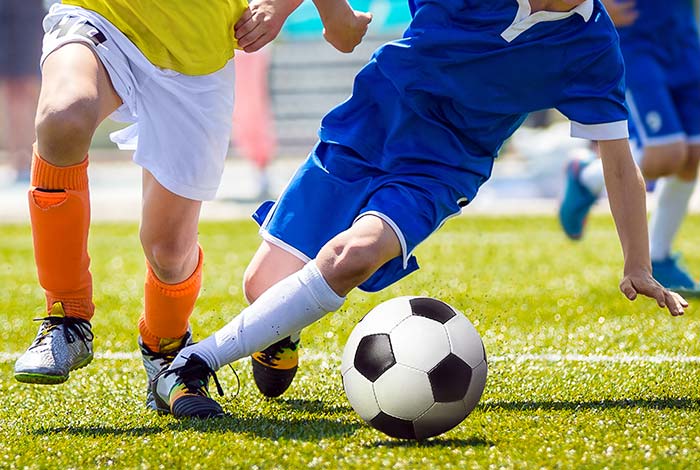We treat many different types of sports-related injuries, which can range from minor sprains and strains to serious fractures or ruptures that require surgery. If you injure yourself playing sport, it is important to stop immediately as continuing to play with an injury may lead to further and potentially more serious problems. The RICE method (rest, ice, compression, elevation) may help to relieve pain and swelling in the case of minor sprains and strains. More serious injuries need a proper medical diagnosis and may require urgent treatment.
Common Injuries
Among the most common sports-related injuries to the feet and ankles are:
- Sprained Ankle – If you twist or turn your ankle awkwardly you may sprain it. This means the ligaments holding your ankle bones together have been forced beyond their normal range of motion causing them to stretch or tear. It is normally the ligaments on the outer side of the ankle that are affected.
- Chronic Ankle Instability – This is when the outer side of the ankle repeatedly gives way. It is usually the result of recurrent ankle sprains or failing to rest or rehabilitate properly following a serious ankle sprain.
- Fractures
- Sprains and Strains
Causes of Sports Injuries and Trauma
- A sprained ankle is often the result of landing awkwardly on your foot after jumping or pivoting, or from exercising on an uneven surface. It can also be caused by someone landing heavily on your foot.
- Chronic ankle instability occurs when the ligaments and muscles around the ankle are not given sufficient time to strengthen and heal following an ankle sprain. This can lead to more sprains which further weaken or stretch the ligaments, resulting in greater instability.
- Fractures, sprains and strains are common sporting injuries and may range from stress fractures and minor sprains through to compound fractures or ruptures.
Symptoms of Sports Injuries and Trauma
- Ankle sprains are painful and cause swelling, bruising and instability in the ankle joint. It may be hard to put weight on the affected ankle.
- Chronic ankle instability results in increasing weakness in the ankle joint and a risk of repeated damage or injury.
- Fractures, sprains and strains vary in severity from minor pain and swelling to being completely debilitating.
Diagnosis of Sports Injuries and Trauma
Diagnosis will involve a physical examination and you may also need diagnostic imaging (X-ray, CT scan or MRI scan) to confirm the diagnosis and/or assess the damage.
Treatment of Sports Injuries and Trauma
Treatment will depend on the type and severity of the injury. Even if you suffer only a minor injury, failing to treat it properly can lead to a risk of complications. For example, if you return to activities too soon after spraining your ankle you may develop chronic ankle instability and a risk of arthritis in the ankle joint. Treating chronic ankle instability may require physiotherapy and bracing to support the ankle. In some cases, you may need surgery to repair or reconstruct the damaged ligament.
OUR CONSULTANTS
We are an experienced and highly qualified team of orthopaedic surgeons using the latest surgical and non-surgical techniques to eliminate or reduce pain so our patients can experience the best possible quality of life.
BOOK A CONSULTATION
Whether you have an existing diagnosis or you are keen to discover what is causing your symptoms, contact us to arrange a consultation. We can organise any tests you require and discuss your treatment options.
What Our Patients Say

